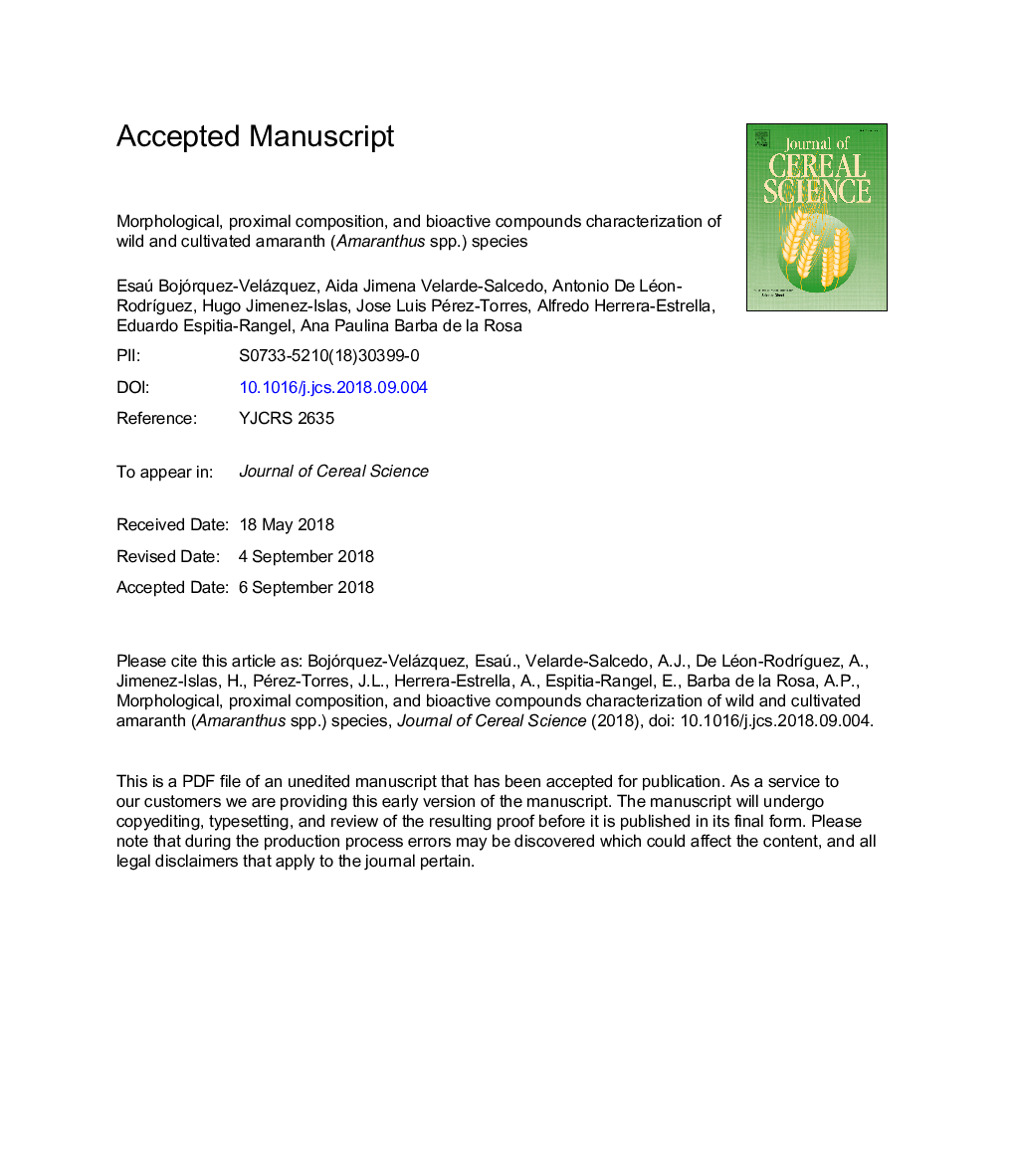| Article ID | Journal | Published Year | Pages | File Type |
|---|---|---|---|---|
| 10117093 | Journal of Cereal Science | 2018 | 35 Pages |
Abstract
Amaranth seeds have gained renewed interest due to the presence of encrypted peptides with several biological functions, among which the inhibition of dipeptidyl peptidase IV (DPPIV) and angiotensin converting enzyme (ACE) stands out. Amaranth seeds also contain an oily fraction rich in squalene, an unsaturated hydrocarbon, which has been attributed diverse beneficial health effects. Up to date, only cultivated species have been analysed and no information exists about bioactive peptides and lipid composition of wild amaranths. The aim of this work was to carry out the morphological and biochemical comparison of cultivated species A. hypochondriacus (waxy and non-waxy cultivars) and A. cruentus with the wild species A. powellii and A. hybridus. The highest protein and fat contents were observed in A. powellii, but A. cruentus showed the highest squalene content. The electrophoretic protein profile showed differences in protein accumulation among species. In vitro gastrointestinal digestion was used to release the encrypted peptides and their inhibitory action against DPPIV and ACE activities was evaluated. Our results showed that peptides from A. hypochondriacus cv Opaca presented the highest inhibition against both DPPIV and ACE activities. This information is valuable for the design of strategies to obtain new amaranth varieties with higher nutraceutical quality.
Keywords
Related Topics
Life Sciences
Agricultural and Biological Sciences
Agronomy and Crop Science
Authors
Esaú Bojórquez-Velázquez, Aida Jimena Velarde-Salcedo, Antonio De León-RodrÃguez, Hugo Jimenez-Islas, Jose Luis Pérez-Torres, Alfredo Herrera-Estrella, Eduardo Espitia-Rangel, Ana Paulina Barba de la Rosa,
